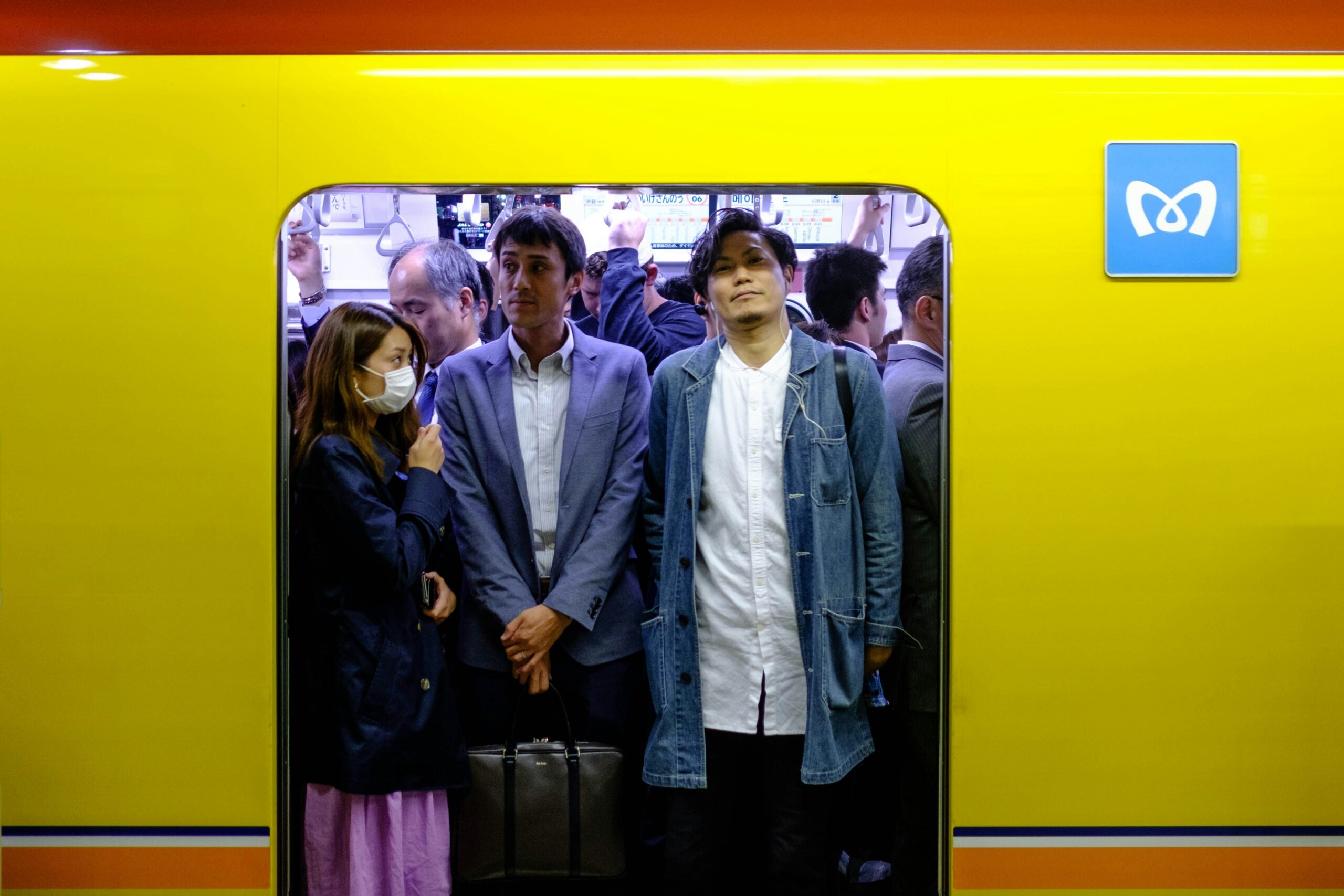The Ultimate Guide to Budget-Friendly Travel in Southeast Asia
Southeast Asia has a way of getting under your skin. Maybe it’s the morning markets where vendors greet you with genuine smiles, or the way a $2 meal can be the best thing you’ve eaten all year. Perhaps it’s waking up to jungle sounds in Thailand, watching sunrise over rice terraces in Vietnam, or surfing uncrowded waves in Indonesia while spending less than you would on rent back home.
This region has earned its reputation as the ultimate destination for budget travel in Asia, and for good reason. Your money goes further here than almost anywhere else on the planet, but that’s just the beginning. The real magic lies in how seamlessly affordable living combines with rich culture, stunning landscapes, and communities that welcome travelers with open arms.
Whether you’re planning a two-week vacation or considering months of remote work abroad, Thailand, Vietnam, and Indonesia offer the perfect combination of adventure, comfort, and value. This guide covers everything from finding cheap flights in Southeast Asia to eating like a local, staying connected, and stretching every dollar without sacrificing experience.
Why Southeast Asia Remains Unbeatable for Budget Travelers
The numbers tell part of the story. Favorable exchange rates mean your dollars, euros, or pounds translate into significant purchasing power. A private room that costs $15 here might run you $150 elsewhere. A feast of local dishes? Often under $10 for the entire day.
But beyond economics, these countries have built robust tourism infrastructure while maintaining authentic cultural experiences. Visa policies are traveler-friendly, with most nationalities eligible for visa-on-arrival or simple e-visa applications. Low-cost carriers like AirAsia, Scoot, and VietJet Air have transformed regional travel, making it possible to fly between countries for less than a nice dinner out.
The hospitality culture runs deep here. Locals don’t just tolerate tourists; they often go out of their way to help, recommend hidden gems, and share their traditions. This warmth transforms budget travel from mere cost-saving into genuine cultural immersion.
Thailand: Where Tradition Meets Modern Nomad Life
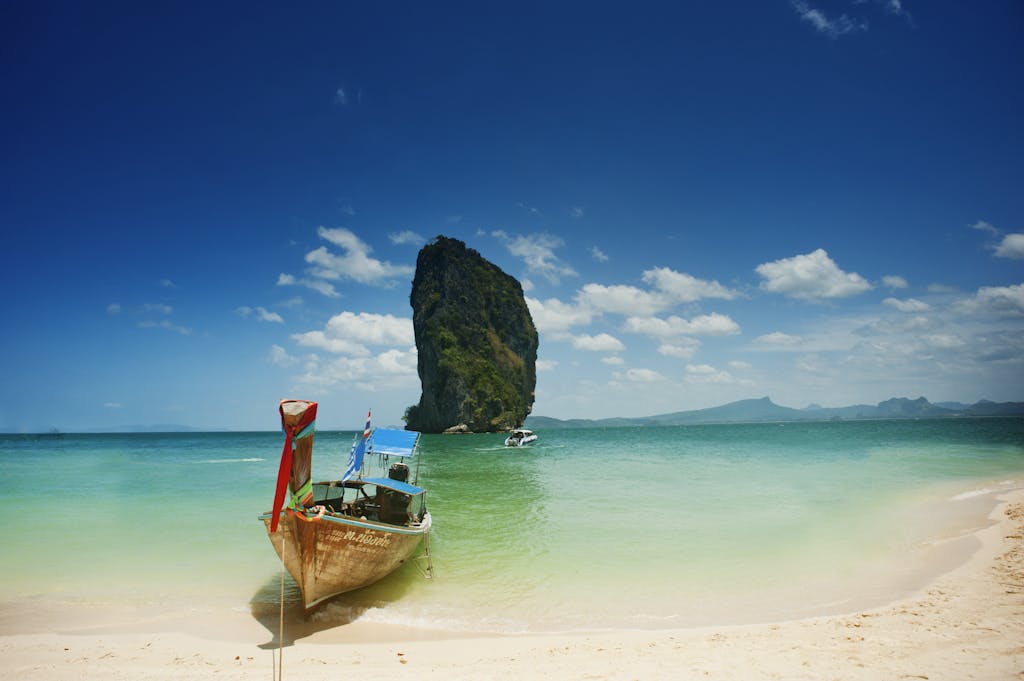
Thailand serves as many travelers’ introduction to Southeast Asia, and it sets the bar high. From bustling Bangkok to serene mountain towns and tropical islands, the country offers incredible diversity within easy reach.
Arriving and Getting Around
Bangkok’s Suvarnabhumi Airport (BKK) connects to virtually everywhere, making it an ideal entry point. Use Skyscanner or Google Flights to track prices and set alerts for your target routes. Booking 4-6 weeks ahead typically yields the best deals on cheap flights to Southeast Asia.
Once you’re in Thailand, transportation options abound. The 12Go Asia platform simplifies booking buses, trains, and ferries across the country. In Bangkok, skip the tourist-trap tuk-tuks and use Grab (Southeast Asia’s answer to Uber) or the efficient BTS Skytrain. The Chao Phraya Express Boat offers scenic river travel for just pennies.
For longer distances, overnight buses and trains save both time and accommodation costs. The sleeper train from Bangkok to Chiang Mai costs around $15-30 depending on class and turns travel time into sleeping time.
Where to Base Yourself
Chiang Mai has become a digital nomad hub for good reason. Monthly apartment rentals start around $250-300, often including utilities and decent Wi-Fi. The Old City buzzes with coworking spaces, cafes with strong coffee and stronger internet, and a thriving community of remote workers.
Beach lovers should look beyond overcrowded Phuket. Koh Lanta offers laid-back island vibes with far fewer tourists, while Krabi provides stunning limestone karsts without the inflated prices. Pai, a mountain town north of Chiang Mai, attracts those seeking cooler weather and bohemian energy.
Booking.com and Agoda regularly feature flash sales on guesthouses and boutique properties. Don’t hesitate to message hosts directly for better monthly rates.
Food: Thailand’s Greatest Value Proposition
Thai cuisine alone justifies the trip. Street food vendors serve restaurant-quality dishes for $1-3. A proper plate of Pad Thai, green curry with rice, or som tam (papaya salad) costs less than a coffee in most Western cities.
Night markets become dinner theaters where you can sample grilled satay, fresh spring rolls, mango sticky rice, and coconut ice cream while wandering past handicraft stalls. In Chiang Mai, the Sunday Walking Street Market transforms the Old City into a food lover’s paradise.
Local tip: wherever you see lines of Thai people (not tourists), follow them. They know where the good food lives.
Must-Experience Attractions
Bangkok rewards wanderers. The Grand Palace and Wat Pho showcase Thailand’s ornate architectural tradition, while the city’s modern rooftop bars offer sunset views that rival any in the world. Take the ferry to Wat Arun at dusk when the temple glows against the twilight sky.
Chiang Mai’s hundreds of temples each tell their own story, but don’t miss the Sunday Walking Street for handicrafts and the nearby Doi Suthep temple overlooking the city. The surrounding countryside offers elephant sanctuaries (choose ethical ones where elephants aren’t ridden), zip-lining through jungle canopy, and white-water rafting.
Southern Thailand’s islands cater to different vibes. Koh Tao attracts divers with affordable certification courses and healthy coral reefs. Koh Lanta and Railay Beach provide relaxation without the party scene.
Practical Details
Currency: Thai Baht (THB), roughly 35 THB = $1 USD
Language: Thai, but English is widely understood in tourist areas and cities. Learning basic phrases like “sawasdee kha/krap” (hello) and “khob khun” (thank you) goes a long way.
Safety: Thailand is very safe for travelers. Standard precautions apply: watch your belongings in crowded areas, be cautious with drinks in nightlife districts, and use reputable transportation.
Culture: Buddhism shapes daily life here. Dress modestly when visiting temples (cover shoulders and knees), remove shoes before entering homes and temples, and avoid touching people’s heads or pointing feet at others.
Vietnam: Southeast Asia’s Best-Kept Secret Goes Mainstream

Vietnam has exploded onto the nomad scene over the past few years, and once you arrive, you’ll understand why. The country combines French colonial charm, dramatic natural beauty, incredibly fresh food, and some of the best value in the region.
Entry Points and Transportation
Hanoi’s Noi Bai International Airport (HAN) serves the north, while Ho Chi Minh City’s Tan Son Nhat Airport (SGN) covers the south. Bamboo Airways, VietJet, and Vietnam Airlines all offer competitive domestic fares. For cheap flights Southeast Asia-wide, booking at least a month ahead and maintaining flexible dates makes a significant difference.
Vietnam’s train system deserves special mention. The Reunification Express runs the country’s length, with overnight cabins offering surprisingly comfortable beds. The Hanoi to Da Nang route hugs the coastline, providing ocean views that rival any scenic journey worldwide. Book through Baolau or The Sinh Tourist for straightforward reservations.
Within cities, Grab dominates for car and motorbike rides. Buses cover everything else through reliable companies like Phuong Trang and Hoang Long.
Accommodation That Won’t Break the Bank
Vietnam might offer the best accommodation value in Southeast Asia. Hanoi’s Old Quarter features countless family-run guesthouses with spotless rooms, hot showers, and breakfast included for $12-20 nightly. Many owners treat guests like family, offering travel advice and home-cooked meals.
Da Nang has emerged as a digital nomad favorite, with purpose-built coliving spaces offering monthly rates around $400-600 including utilities, coworking access, and community events. The city provides beach access, modern infrastructure, reliable internet, and a growing expat community without Bali’s crowds.
Hoi An, just 30 minutes from Da Nang, offers ancient town charm with more reasonable prices than purely touristy destinations. Monthly homestay rentals here can dip below $300.

Eating Your Way Through Vietnam
Vietnamese food emphasizes fresh herbs, balanced flavors, and regional variety. Breakfast means pho (beef noodle soup) or banh mi (baguette sandwiches reflecting French influence). Lunch could be bun cha (Hanoi’s grilled pork specialty) or cao lau (Hoi An’s unique noodle dish). Dinner options range from fresh spring rolls to clay-pot fish to countless regional specialties.
The coffee culture here rivals anywhere. Vietnamese iced coffee (ca phe sua da) combines strong local beans with sweetened condensed milk for an addictive caffeine hit that costs about $1. Egg coffee in Hanoi takes it further, topping espresso with whipped egg yolk for a dessert-like experience.
Street food markets in every city offer the most authentic (and affordable) dining. A full day’s meals can easily cost under $10 if you eat where locals do.
Unmissable Experiences
Ha Long Bay’s limestone karsts rising from emerald water create one of Earth’s most recognizable landscapes. Budget travelers can find overnight cruise deals for around $50-80 that include meals and kayaking. Alternatively, Cat Ba Island offers similar scenery with better prices and fewer tourists.
Hoi An Ancient Town glows at night when thousands of lanterns illuminate the riverside. The UNESCO World Heritage site rewards aimless wandering, with tailor shops, riverside cafes, and cooking classes filling the days between beach visits.
Sapa’s rice terraces cascade down mountainsides in the far north, where minority hill tribes maintain traditional lifestyles. Homestays in local villages provide authentic cultural exchange for about $10 per night including meals.
Da Nang itself might seem purely functional at first, but give it time. Beaches stretch for miles with minimal development, marble mountains hide cave temples, and the food scene rivals anywhere in Vietnam. It’s becoming the perfect base for nomad guide Vietnam followers who want coastal living without island isolation.
Ho Chi Minh City (still called Saigon by many) pulses with energy. The War Remnants Museum provides sobering historical context, while District 1’s rooftop bars showcase the city’s modern ambitions. Day trips to the Cu Chi Tunnels or Mekong Delta add depth to any southern Vietnam visit.
Vietnam Essentials
Currency: Vietnamese Dong (VND), approximately 25,000 VND = $1 USD. The zeros intimidate at first, but you’ll adapt quickly.
Language: Vietnamese is tonal and challenging, but younger Vietnamese in cities often speak English. Google Translate becomes invaluable in rural areas.
Safety: Vietnam is generally safe with low violent crime. Watch for common scams like taxi meter tampering (use Grab instead), overcharging at markets, and motorbike rental deposit schemes. Traffic can be chaotic but follows its own logic.
Culture: Respect for elders and community harmony matter deeply. Vietnamese people are curious about foreigners and often eager to practice English. The country has moved past wartime divisions, welcoming American and international visitors warmly.
Social fabric: Vietnam’s rapid development creates fascinating contrasts. Modern skyscrapers rise beside traditional pagodas, and you’ll find both cutting-edge tech startups and farmers using water buffalo to plow rice paddies.
Indonesia: 17,000 Islands of Possibility

While Bali dominates Indonesia’s tourism narrative, this archipelago nation offers countless other islands to explore, many with better prices and fewer crowds. The diversity is staggering: from volcanic peaks to pristine beaches, ancient temples to world-class surf breaks.
Getting There and Island Hopping
Ngurah Rai International Airport (DPS) in Bali serves as most travelers’ Indonesian introduction. From there, domestic carriers like Lion Air, Citilink, and Garuda Indonesia make island hopping affordable. Flights to Lombok, Java, or Flores often cost $30-60 when booked ahead.
Fast boats connect nearby islands. Bali to Lombok takes about 2 hours and costs $25-40. Bali to Nusa Penida runs even cheaper at $10-15 each way, revealing dramatic cliffs and manta ray diving without Bali’s development.
For staying connected, Telkomsel SIM cards offer excellent coverage across most of Indonesia. Alternatively, Airalo eSIMs provide data without physical card swaps, ideal for frequent border crossers.
Where to Stay in Bali and Beyond
Bali’s different regions serve different purposes. Canggu has become digital nomad central, with coworking spaces, healthy cafes, surf beaches, and a built-in social scene. Monthly villa rentals run $400-700 for private accommodations with pools.
Ubud provides cultural immersion and cooler mountain temperatures. Rice terraces surround the town, yoga studios proliferate, and the vibe skews more spiritual than party-focused. Budget guesthouses start around $15 nightly, while nicer homestays with breakfast cost $25-35.
Uluwatu on Bali’s southern peninsula offers world-class surf and clifftop sunsets without Canggu’s crowds. Accommodation costs slightly less, and the slower pace suits those seeking focus time.
Outside Bali, Lombok provides similar attractions at half the price. The Gili Islands off Lombok’s coast offer three distinct personalities: Gili Trawangan for nightlife, Gili Meno for seclusion, and Gili Air for balance. Yogyakarta on Java serves as the cultural heart of Indonesia, with Borobudur and Prambanan temples nearby and budget accommodation abundant.
Airbnb works well in Indonesia for monthly rentals. Local Facebook groups like “Bali Digital Nomads” often post better deals directly from owners.
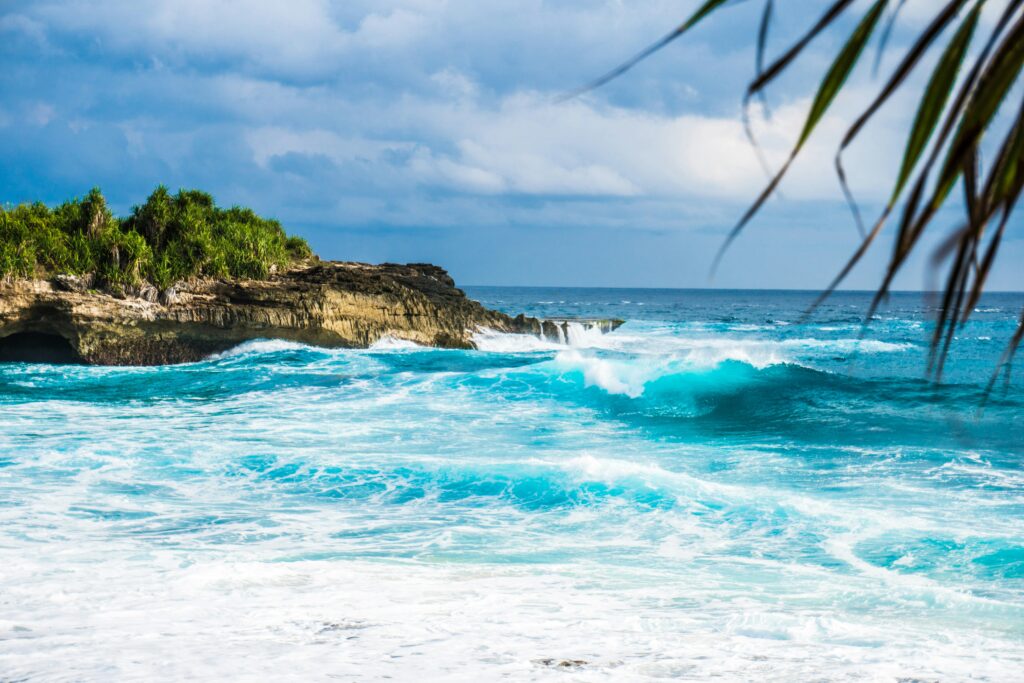
Indonesian Cuisine: Flavorful and Affordable
Indonesian food draws from hundreds of ethnic groups, creating remarkable regional variety. Nasi goreng (fried rice) serves as the national dish, available everywhere for $2-3. Satay (grilled meat skewers), rendang (slow-cooked spicy beef), and gado-gado (vegetable salad with peanut sauce) appear on most menus.
Warungs (small family restaurants) offer the best value and authenticity. A full meal rarely exceeds $3-5, and the owners often become friends over repeat visits. Fresh tropical fruits like mangosteen, rambutan, dragon fruit, and salak (snake fruit) cost pennies at markets.
Bali’s cafe culture has evolved beyond traditional Indonesian fare, with smoothie bowls, specialty coffee, and international cuisine available at reasonable prices. Crate Café in Canggu exemplifies this trend with fast Wi-Fi, healthy food, and a community vibe.
What to See and Do
Ubud’s Monkey Forest lets you walk among hundreds of long-tailed macaques (keep a firm grip on belongings). The surrounding rice terraces, particularly Tegalalang, provide iconic photo opportunities and peaceful walks.
Mount Batur sunrise hikes have become almost cliché, but watching dawn break over the volcanic crater with Java’s peaks visible in the distance genuinely delivers. Tours cost around $30-40 including breakfast cooked in volcanic steam.
Uluwatu Temple perches on cliffs above crashing waves, with traditional Kecak dance performances at sunset. Further north, Tanah Lot creates one of Bali’s most photographed scenes when surrounded by high tide.
Lombok’s Senggigi Beach offers relaxation without Bali’s hustle, while Mount Rinjani presents a challenging multi-day trek rewarded with crater lake views. The island’s beaches generally surpass Bali’s for swimming and snorkeling.
Beyond typical tourist activities, Indonesia offers incredible diving and surfing. The Komodo Islands provide encounters with dragons and pristine underwater environments. Raja Ampat in far eastern Indonesia showcases some of Earth’s richest marine biodiversity, though reaching it requires more time and budget.
Indonesia Practical Information
Currency: Indonesian Rupiah (IDR), roughly 15,500 IDR = $1 USD. Cash remains important, though digital payments via Gopay and OVO have gained ground in cities.
Language: Bahasa Indonesia is the national language, relatively simple grammatically and using Latin script. English is common in tourist areas, less so elsewhere. Indonesians appreciate any attempt to speak their language.
Safety: Indonesia is generally safe, though petty theft occurs in tourist areas. Be cautious with drinks in nightlife settings, negotiate prices clearly before services, and research any volcanic activity before trekking. Traffic in Bali can be chaotic; many opt for scooters, but this requires confidence and proper licensing.
Culture: Indonesia is the world’s largest Muslim-majority nation, though Bali practices Hinduism and diversity exists throughout the archipelago. Dress modestly outside beach areas, remove shoes when entering homes and temples, and use your right hand for giving and receiving.
Biodiversity: Indonesia’s position along the equator creates remarkable ecological diversity. From orangutans in Sumatra to Komodo dragons in Nusa Tenggara, the wildlife watching opportunities are extraordinary.
Money Matters: Real Budget Breakdowns
Understanding daily costs helps with planning. Here’s what you can expect across different travel styles (in USD):
Thailand:
- Budget traveler: $30-50/day (hostels, street food, local transport, free activities)
- Mid-range comfort: $60-100/day (private rooms, mix of local and tourist restaurants, some tours)
- Digital nomad: $1,000-1,500/month (private apartment, coworking, balanced lifestyle)
Vietnam:
- Budget traveler: $25-45/day (basic guesthouses, local food, buses and trains)
- Mid-range comfort: $50-90/day (nicer hotels, varied dining, occasional tours)
- Digital nomad: $900-1,400/month (coliving or apartment, regular cafe work, comfortable living)
Indonesia:
- Budget traveler: $30-60/day (hostel dorms, warungs, local transport)
- Mid-range comfort: $70-120/day (private bungalows, restaurant meals, activities)
- Digital nomad: $1,000-1,600/month (Bali villa, coworking, scooter rental, balanced lifestyle)
Flights between these countries typically run $30-100 when booked 4-6 weeks ahead through budget carriers. Travel during shoulder season (April-May, September-October) can reduce costs further while avoiding peak crowds.
How Much to Budget
For an extended backpacking or nomad trip through Southeast Asia, here’s a rough daily guide (in USD):
| Country | Budget Traveler | Mid-Range Comfort | Nomad-Style Living |
|---|---|---|---|
| Thailand | $30–50/day | $60–100/day | $1,000–1,500/month |
| Vietnam | $25–45/day | $50–90/day | $900–1,400/month |
| Indonesia | $30–60/day | $70–120/day | $1,000–1,600/month |
Flights between these countries usually cost $30–100 when booked in advance.
Planning Your Southeast Asia Adventure
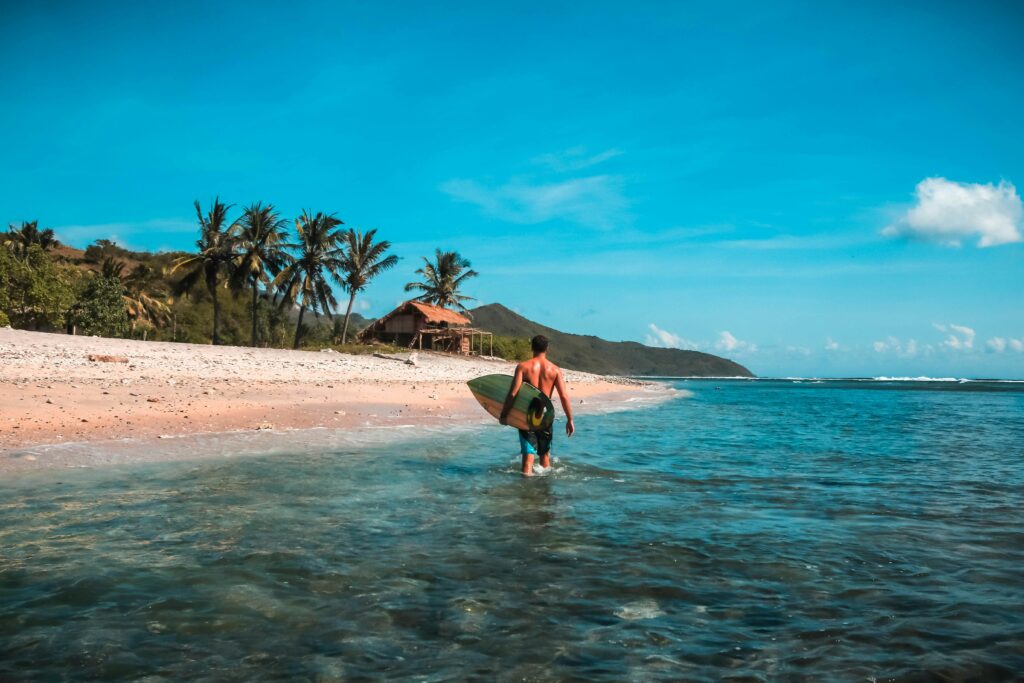
Best Time to Visit
November through April generally provides the driest weather across most of Southeast Asia, though it varies by specific location. Thailand’s cool season (November-February) offers the most comfortable temperatures. Vietnam’s weather differs dramatically between north and south; northern winters can be surprisingly cold and damp.
Bali experiences dry season from April to October, though brief showers can occur year-round in the mountains. Shoulder seasons (April-May and September-October) offer the best balance of good weather, lower prices, and fewer tourists.
What to Pack
Travel light. You can buy almost anything you need in Southeast Asia for less than at home. Essentials include:
Clothing: Lightweight, quick-dry fabrics work best in tropical humidity. Bring modest options for temple visits. A light rain jacket handles sudden downpours. Comfortable walking sandals and one pair of closed-toe shoes cover most situations.
Tech: Universal power adapter (most Southeast Asian countries use Type A, C, or F plugs, though this varies). Portable charger for long travel days. Unlocked phone for local SIM cards.
Health: Basic first-aid kit, any prescription medications with documentation, sunscreen (expensive in tourist areas), insect repellent with DEET.
Documents: Passport with at least 6 months validity. Printed/digital copies of important documents stored separately. Travel insurance documentation.
Money Management
Carry some cash, but don’t overdo it. ATMs are widespread in cities and tourist areas, though they charge fees (typically $5-7 per withdrawal). Wise and Revolut offer competitive exchange rates and low fees for international spending.
Notify your bank of travel plans to avoid card freezes. Keep some emergency cash in USD or EUR, which can be exchanged anywhere. In rural areas, cash is king, so withdraw before leaving cities.
Staying Healthy
Standard travel vaccinations (Hepatitis A and B, Typhoid, Tetanus) are recommended. Consult your doctor 4-6 weeks before departure. Malaria risk exists in some rural areas; assess based on your specific itinerary.
Drink bottled or filtered water. Most accommodations provide this, and refill stations are common in tourist areas. Street food is generally safe when freshly cooked and popular with locals. Use your judgment: if it looks or smells off, skip it.
Travel insurance is non-negotiable. SafetyWing offers affordable coverage popular with digital nomads, including basic health coverage and trip protection.
Essential Apps for Budget Travelers
These apps simplify life and save money throughout Southeast Asia:
Transportation:
- Grab: Rides, food delivery, and more across the region
- 12Go Asia: Book buses, trains, and ferries between cities and countries
- Bolt: Alternative to Grab in some cities with competitive pricing
Accommodation & Activities:
- Booking.com: Reliable for hotels and guesthouses with good cancellation policies
- Agoda: Often better prices than Booking for Southeast Asia properties
- Klook: Discounted tours, activities, and attraction tickets
Money & Logistics:
- Wise: Low-fee international transfers and spending
- Trail Wallet: Simple daily expense tracking
- XE Currency: Real-time exchange rates
Communication:
- Google Translate: Download offline language packs before arrival
- WhatsApp: Primary messaging app across Southeast Asia
- Maps.me: Offline maps with hiking trails and points of interest
Smart Strategies for Stretching Your Budget
Beyond the basics, these tactics help maximize value:
Eat strategically. Street food and local restaurants (not the ones with picture menus in English) provide authentic experiences at a fraction of tourist restaurant prices. Markets offer fresh fruit for snacks. Some guesthouses include breakfast, saving $3-5 daily.
Travel overnight when possible. Night buses and sleeper trains cover two needs: transportation and accommodation. A $20 overnight bus to your next destination means one less night of hotel costs.
Leverage loyalty and community. Many hostels offer free nights after stays of a certain length. Cafe loyalty cards add up for regular visitors. Join local Facebook groups for travelers and nomads; members share housing deals, job opportunities, and travel partnerships.
Negotiate respectfully. Bargaining is culturally expected in markets and with tuk-tuk drivers, but approach it with good humor. In many cases, the difference is pocket change to you but meaningful to local vendors.
Choose your splurges. Budget travel doesn’t mean suffering. Save money on accommodation and transport so you can afford memorable experiences like diving certification, cooking classes, or that perfect sunset dinner. Balance is key.
Book directly when staying longer. For weekly or monthly accommodation, contacting owners directly often yields better rates than booking platforms. This is especially true for apartments and villas in nomad hubs like Chiang Mai, Da Nang, and Canggu.
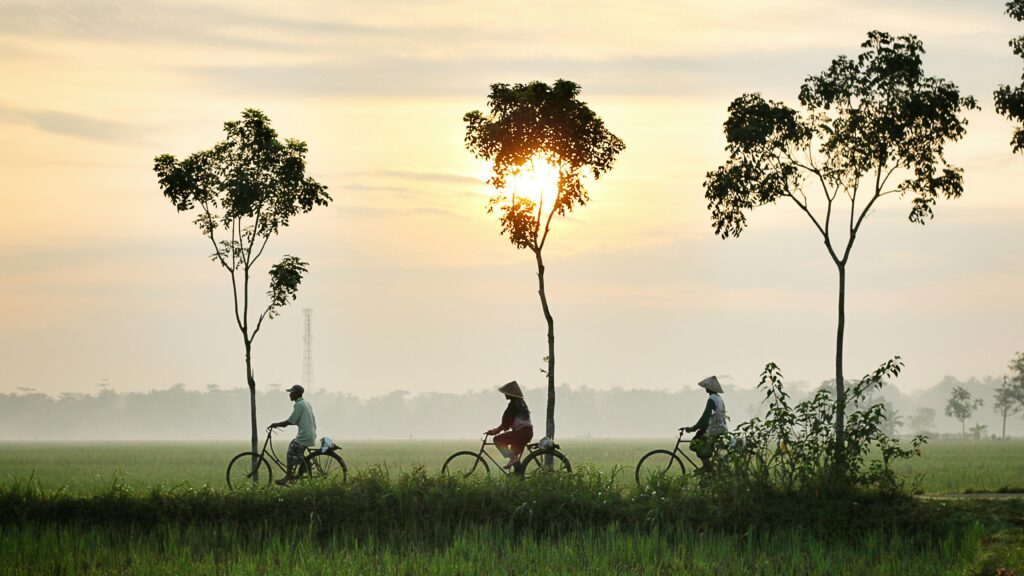
Living the Dream Without the Price Tag
Southeast Asia proves that meaningful travel doesn’t require a hefty bank account. The region offers something increasingly rare: the ability to explore stunning landscapes, engage with fascinating cultures, eat phenomenally well, and build genuine connections while spending less than you would on basic living expenses back home.
Whether you’re taking a career break to backpack through temples and beaches, testing out the digital nomad lifestyle with a few months of remote work, or planning an annual adventure that recharges your spirit, Thailand, Vietnam, and Indonesia deliver experiences that linger long after you’ve returned home.
The key is approaching these countries with curiosity and respect. Learn a few phrases in the local language. Try the food that locals eat. Wander beyond the main tourist circuits. Engage with the people you meet along the way. The best parts of budget travel in Asia often cost nothing at all: a conversation with a shopkeeper, watching daily life unfold in a village, or stumbling onto a local festival you didn’t know existed.
Start planning your Southeast Asia adventure today. Your future self, sitting in a riverside cafe in Hoi An or watching sunset from a Thai beach, will thank you for taking the leap.
Related Post: The Best Time to Visit Southeast Asia: A Climate and Seasons Guide



